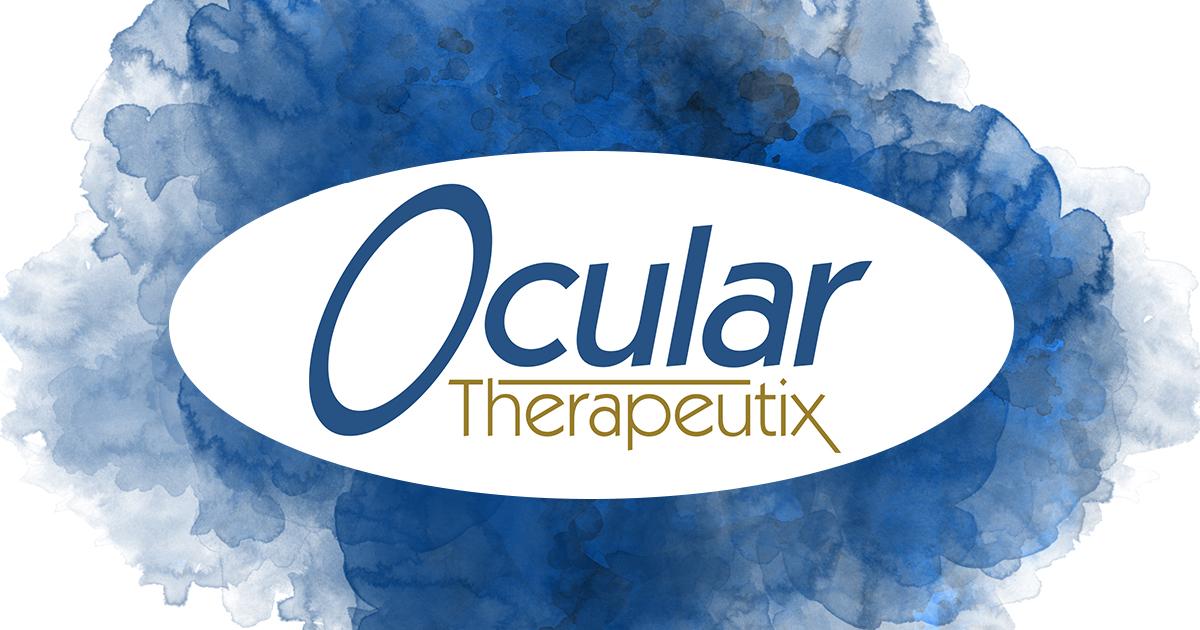After Re-submitted NDA a Year Ago, Ocular Therapeutix Finds Its Path Forward

In July 2018 Ocular Therapeutix re-submitted its New Drug Application for Dextenza to the Food and Drug Administration. At that time, Scott Corning, the company’s senior vice president, commercial, explained that a major changeover in management and personnel was moving the company environment from device to pharma – because Dextenza is a drug product – in anticipation of the FDA’s re-inspection of the company’s facilities.
Before the inspection, the new management team shored up everything from a quality and technical operations perspective, according to Corning, and late last year the FDA granted approval for Dextenza for treatment of ocular pain post ophthalmic surgery. Following that milestone, the company filed a supplemental NDA to add an indication for treatment of ocular inflammation post ophthalmic surgery. The FDA accepted that NDA and set a Prescription Drug User Fee Act (PDUFA) target action date of November 10, 2019.
To continue the progress, the company has now added a commercial team around Dextenza that will be responsible for selling the product. A year after re-submitting that NDA for Dextenza, we check in on where Ocular Therapeutix is headed.
Reimbursement Coding
Corning points out that product approval is meaningless if there’s not a path for reimbursement. Dextenza has been preliminarily recommended for a J-code, which it will potentially receive in January 2020, and has recently received a C-code and pass-through payment status to provide reimbursement during the transition, effective July 1.
Pipeline
Ocular Therapeutix has two product candidates designed for treatment of intraocular pressure (IOP) in patients with glaucoma and ocular hypertension.
The first is OTX-TP, an intracanalicular insert that delivers a preservative-free formulation of travoprost for the reduction of IOP in patients with primary open-angle glaucoma or ocular hypertension for up to 12 weeks with a single insert. Recently released topline data show the Phase III clinical trial did not reach its primary endpoint of statistically significant superiority in mean reduction of IOP compared with placebo at all nine time points. Subjects treated with OTX-TP showed a greater reduction in IOP from baseline relative to placebo insert at all nine time points, and these differences were statistically significant for eight of the nine time points.
The OTX-TP intracanalicular insert is a novel means of drug administration and a novel dosage form. Ocular Therapeutix chief medical officer Michael Goldstein, MD, indicates that one should interpret trial results of a single insert differently than a topical eye drop that requires daily administration.
He acknowledges a prostaglandin drop may achieve lower IOP than OTX-TP if the patient is compliant with daily use – but OTX-TP removes the compliance issue. Dr. Goldstein notes that this not only ensures correct dosing to the patient and peace of mind for the physician, but it also reduces the number of inquiries to physicians and clinic staff from patients needing clarification of how and when to take their medications, and prevents callbacks that consume staff time. The company plans to work with the FDA to determine potential paths forward for the product candidate.
The second glaucoma product is OTX-TIC, an intracameral injection of travoprost. Dr. Goldstein says this product is expected to achieve greater IOP lowering compared with OTX-TP, and the company is currently enrolling subjects for a Phase I study. Early results presented at this year’s American Society of Cataract and Refractive Surgery meeting showed OTX-TIC was able to lower IOP in patients for up to nine months with a single insert.
In addition to the glaucoma programs, Ocular Therapeutix has a tyrosine kinase inhibitor intravitreal implant, OTX-TKI, for treatment of wet age-related macular degeneration, diabetic macular edema, and retinal vein occlusion. It’s a small-molecule agent designed to provide patients with less-frequent dosing than current treatments. This product is in Phase I and patients are being actively enrolled in a dose-escalation study.
For questions about this article, please contact Steve Lenier at steve@healthegy.com.
